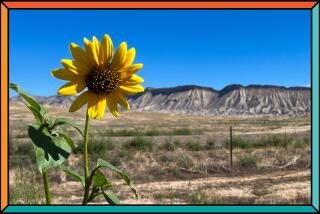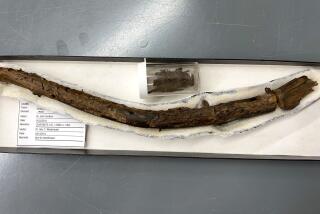Nice Weather but It’s Still Winter in Southland
Don’t let all those little tomato plants at nurseries fool you. This week’s weather should remind us that it’s still winter, if just barely. I did buy an ‘Early Girl,’ and will try once again to get some tomatoes by April, but I also brought home a bare-root rose, some bare-root strawberries and a few little perennials in quart pots.
The rose was already leafing out, but that’s OK since I planted it right away. If the new sprouts had been elongated or pale from lack of light, I would have simply snapped them off. New sprouts from backup buds would have replaced them. But they were a healthy reddish green.
Although it’s a little late in the bare-root season, they’re a better bet than all those tomatoes lining some nurseries’ benches, ‘Early Girl’ being the possible exception.
I keep trying with this variety because I know gardeners who begin getting tomatoes in April from plants put in now. They all live in the warm parts of the Los Angeles Basin and Orange County such as Montebello or Santa Ana. But I think I’ve found a nice, warm place. It’s against a sunny, south-facing wall where they’ll be out of the cool breezes off the ocean.
In the San Gabriel, San Fernando and other inland valleys, frost is still possible in March. In these inland areas, any tomatoes in the ground last week are probably blackened with frost by now. Near the coast it’s simply too cool and going to stay that way for a while.
In the past, when I’ve planted even ‘Early Girl’ at this time of the year, I get lots of growth but no tomatoes until early summer. Other varieties don’t stand a chance.
The strawberries, however, do great planted at this time of the year, especially in my cooler coastal climate and slightly sandy soil. I’ll have berries by April and they’ll continue into early summer, if I make sure I don’t plant them too deep. Strawberries are real sensitive about this.
The crown, or base of the plant, must be above ground. They don’t like clay soils so in previous gardens I’ve had to grow them in slightly raised beds full of amended soil. Strawberries are much more appealing if mulched with some loose, dry material to keep the fruit clean. I’ve used straw, but pine needles are my favorite and I’ve been known to gather them from the street since I have no pines in my garden.
Perennials now
Late February and March are my favorite times to plant perennials because they grow so quickly in the warming weather and moist soil, blooming magnificently in late spring. They also are easier to find at nurseries.
I found a dianthus named ‘Brilliant’ that has been missing in my garden for a few years. These carnation relatives are not long-lived but they put on a brilliant show in late April or May, sending up a forest of little carmine flowers from low, spreading plants.
I also brought home a flat-full of delphiniums in quart pots. In late February, they haven’t started to make those blue and purple flower spikes yet, so they get their roots out into the soil and when they do bloom they are tall and sturdy.
They need a rich soil, full of compost or amendment with some organic fertilizer dug in. I also mix in a tiny scoop of Osmocote (a timed-release fertilizer) in the bottom of each planting hole and put in five-foot-tall bamboo stakes as soon as the little plants are in the ground.
Technically perennials, delphiniums seldom last more than a year, blooming in spring and again in late summer if I cut them back to within a foot of the ground after they flower.
Deciduous magnolias
I regrettably had to pass on the wonderful deciduous magnolias that I saw at the nursery. I simply haven’t the room for another tree, even slow, small trees like these.
Though they are more popular in the Northwest and on the East Coast, these magnolias do just fine here. A week or so ago, there was a 20-foot giant (big for a deciduous magnolia) in full flower on Westwood Boulevard in West Los Angeles, and now they are blooming in front yards in Pasadena and San Marino.
The saucer magnolia, Magnolia soulangiana, and all its varieties, such as ‘Alexandrina’ and ‘Burgundy,’ are the most common, with big pinkish, tulip-like flowers. The star magnolia, M. stellata, has starry white flowers and also does well from the coast to the inland valleys (none will grow in the high desert or low desert).
Most grow from 10 feet to 20 feet tall and as wide or wider, but it takes them a long time. Expect them to be a bush for a while. Even as trees, they look best with branches kept low to the ground, not pruned high like a patio tree. In some soils and with some districts’ water, the leaf tips brown in late summer, like Japanese maples. But the leaves soon drop off and return bright green in the spring, right after the brief but spectacular show of flowers.






